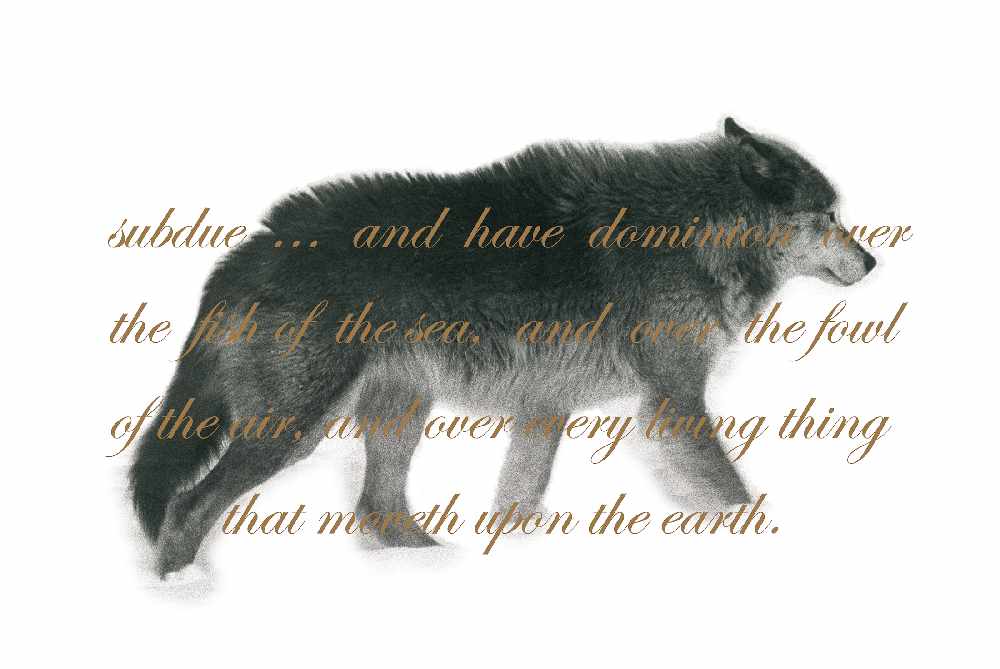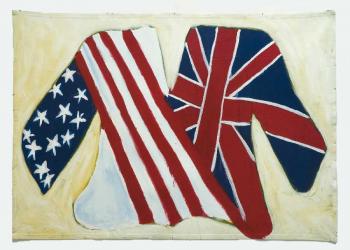Image Caption
Summary

Above: Dominion by Mary Ann Barkhouse
By Andrea Smith
Windspeaker.com Contributor
As of June 1, 167 billboards across Canada are going to have the creations of female Indigenous artists featured on them.
The Resilience Project will showcase their work in the hopes of pushing further the idea of reconciliation, and to encourage people around the country to stop and think about the images they’re seeing in a deeper way.
Lee-Ann Martin is the curator of the project, while the organization, Mentoring Artists for Women’s Art, is responsible for launching the project.
“I suggested we present 50 Indigenous women’s art on billboards, because in my long career I’ve been very cognizant of the fact that Indigenous women artists are underrepresented and excluded,” said Martin.
The project is a direct response to the Truth and Reconcilation Commission’s Call to Action Number 79, which calls for more collaboration between the federal government, survivors of Indian residential schools, Aboriginal organizations, and the arts community.
This call—much like the billboard project—seeks to commemorate the works of Indigenous people in both art and history, and use them to foster understanding between Indigenous and non-Indigenous Canadians.
And the title, Resilience, too, has its own powerful meaning.
“In popular culture, and in particular in the last year or so, I’ve seen a lot of people use ‘Resilience’ with its popular meaning… overcoming adversity. This is about the whole concept of resilience being in Indigenous cultures and the languages since time immemorial. And for these artists, these women artists, it really does embody endurance and adaptability and sovereignty,” said Martin.
She believes the word resilience has become so popular, it lost its depth. As part of her own reconciliation efforts in regard to this project, Martin wants to readdress the word, showing it in its truest sense for Indigenous people.
Every one of the 50 works of art she chose to display on the billboards speaks to this concept. This includes the works of KC Adams, Kenojuak Ashevak, Shuvinai Ashoona, Rebecca Gloria-Jean Baird, Christi Belcourt, Rebecca Belmore, Jaime Black, Lori Blondeau, Shelly Niro, Nadia Myre, Daphne Odjig, Jane Ash Poitras, and many, many others.
Locations for the billboard art includes Edmonton, Calgary, Saskatoon, Regina, Toronto and Vancouver. There are going to be four or five in each of those areas, but there are also Indigenous territories, and smaller urban centers on the list, including areas of northern B.C. which will see the Highway of Tears reached by this project.
Many of the billboards are owned by Pattison company, and their executives were helpful to Martin, she said, helping her to gauge who will see what and where. Some of the billboards are digital, so will flash various images, while others will feature only one image. The project ends Aug. 1.
Mary Ann Barkhouse is one of the artists on the list. The image of hers that will be used is from a series of photographs of wolves from the Halliburton Wolf Center. She created the series a few years ago, but the meaning is still relevant.
“It’s titled, ‘Dominion.’ It’s not a pet wolf, but a wolf in captivity. She was the alpha female of the pack. Over top of that, I put some text from the book of Genesis… It’s the passage where God is giving humans dominion over all the animals, plants, and the birds and the fish in the sea. And that’s been interpreted in different ways,” said Barkhouse.
For Barkhouse, that passage doesn’t mean humans necessarily have authority over animals, which she feels has been one interpretation, but rather that they are stewards of the earth and its creatures. And that the needs of the earth should also be considered when humans are carrying about their business.
Barkhouse said that the alpha wolf in the picture being female represents something that really helps reflect the purpose of the entire Resilience Project.
“‘Dominion’ is also emblematic of the many strong women I have been fortunate to have in my life. First and foremost would be my mother, who happened to be one of the founding members of the Canadian Indigenous Nurses Association,” she said.
“Many other members of my mother’s family have had careers in health care as well… so it’s natural to see where I got the inspiration to use the confident and caring alpha female wolf,” added Barkhouse.
Ruth Cuthand will also have an image of hers featured. This will be the image, Treaty Dress, which depicts a dress that is half Union Jack, and half American flag. It evokes thoughts of borders, and the division between Canada and the U.S., something that only became a reality in colonial times.
“I hope people start to recognize that borders are man-made. It’s this artificial line… Like on the prairies, Little Pine, they used to be in the Cypress Hills and they went from the Cypress Hills to Great Falls, Montana, and that was their territory. They went back and forth, but then they brought in this Medicine line,” said Cuthand, a descendant of the Little Pine Cree Nation. She uses the Indigenous term, Medicine line, to refer to the national border.
“I just want people to start thinking about it in a different way than they usually do,” she said.
For more information on the Resilience initiative go to: http://resilienceproject.ca/

